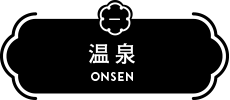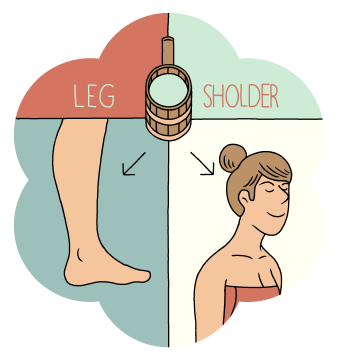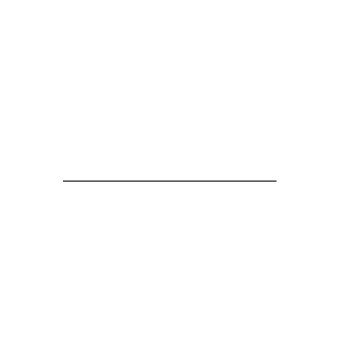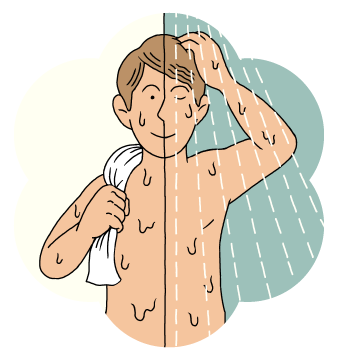足首から
Over your ankles
頭から
Over your head








Over your ankles


Over your head



Before entering the baths,
people pour warm "kake-yu" over their bodies,
but where should you pour it?





Before entering the baths,
people pour warm "kake-yu" over their bodies,
but where should you pour it?


Over your ankles
かけ湯は、入浴前に身体をお湯の温度や温泉成分に慣らすための準備体操のようなもの。足首からひざ・腰、手首から腕・肩と、胸から遠い順におけ10~20杯程度かけて、入浴直後の急な血圧変化を防ぎましょう。頭へのかけ湯は不要です。
Kake-yu is done to adjust one's body to the hot water temperatures and prevent sudden blood pressure changes before entering the bath. Thus, starting with the feet and ankles, then working to the knees, hips, arms, shoulders, and chest, pouring between 10~20 cups over the body is good preparation. Pouring water over your head is unnecessary.




1 hour


10 minutes



What is the average bathing time?




What is the average bathing time?


10 minutes
好き好きではありますが目安は10分程度。長時間の入浴は身体に負荷がかかります。お湯に入るときはゆっくりと。最初に腰まで入ったら、みぞおちまで浸かって深呼吸。ゆっくり肩まで浸かってもう一度深呼吸しましょう。
Though you may want to soak longer, the average length of a soak is only about 10 minutes. Staying too long in the hot waters can strain your body. Enter the bath slowly, then take a deep breath when you are submerged up to your waist. Once your shoulders are underwater, take another deep breath.




Nothing


Rinse yourself off



What should you do when you leave the bath?




What should you do when you leave the bath?


Nothing
温泉にはさまざまな温泉成分が含まれていますが、シャワーなどで上がり湯をするとその効果が薄れてしまいます。体をふくときも水滴をぬぐう程度がおすすめ。ただし、肌がかぶれやすい方はよく洗い流してください。
※刺激性の強い温泉もあるため、その温泉の泉質や入浴法はスタッフにお尋ねください。
Onsen waters are full of beneficial minerals, but the health effects of these will be lost if you rinse off after leaving the bath. We also recommend you to dry your body gently to preserve as much benefit as possible. However, for people with very sensitive skin, rinsing after the bath is better to prevent any redness or rash.
*Some baths contain potentially irritating minerals. In those cases, please consult a staff member on how to proceed.